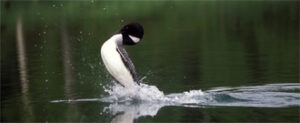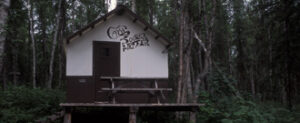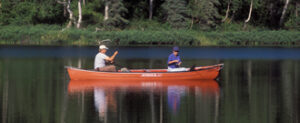
Minutes away, miles from ordinary Talkeetna Camp & Canoe offers a truly unique Alaskan experience. Relax and enjoy the beauty and splendor of Talkeetna, Alaska. Whether canoeing around the lakes spotting the abundant wildlife, catching trophy lake trout, or just staying at the cabin taking in the views you`ll be sure to experience the majesty and serenity of our great state. Talkeetna Camp & Canoe offers cabins located on X and Z lakes as well as canoe rentals on X, Y, Z, and Christiansen Lakes.
Talkeetna is a historic village in the heart of the Susitna River Valley. Hiking, Biking, Canoeing, and abundant wildlife are all within your grasp. A stay at Talkeetna Camp And Canoe with Mt McKinley as the backdrop is just the getaway you’re looking for.
What our guests say
A recent quote from one of our satisfied customers:
“We loved our Alaskan cruise, but we needed some time away from the crowds. We stayed at one of your camps and enjoyed the beauty and solitude so much we didn’t want to leave. You can be sure we will be back.”
Our Lakeside Camps

Our cabins are tent cabins on deck platforms. Each cabin contains 2 double bunks, a table with benches, a propane 2 burner cooktop, a propane heater, and propane lighting. Campers must provide their own bedding, water, and provisions. There are outhouses at both locations. Both camps provide seclusion and lakefront access for canoeing, fishing, or wildlife sightseeing.
Canoeing And Fishing

Christensen Lake
Located in the Talkeetna Area off of Comsat Road and Christensen Lake Road. There are day camping and picnic sites at this location.
Y Lake
Access is off Comsat Road.
X Lake / Z Lake
These 2 Lakes are accessed by a private parking area off Talkeetna Spur Road.
Canoes are available for rent from our downtown location. You may transport to any of the other lakes in the Talkeetna area. Life preservers, float seats, and paddles are provided. Lakes have rainbow trout and fishing gear is available at our downtown office.
Terms and Conditions
While every effort has been made to provide the most accurate and up-to-date information, this site may contain inaccuracies or errors. Talkeetna Camp And Canoe and its affiliates may at any time and without notice make improvements and/or changes in the product and/or the information contained within. It should also be understood that due to unforeseen circumstances, a camp(s) may become unavailable without notice and arrangements could then be made for rescheduling said trip.
Talkeetna Camp And Canoe does not control and accepts no responsibility for the content of any other website that may be accessed through this one or search engines.
At no time may the information contained in this website be used or reproduced without the expressed consent of Talkeetna Camp And Canoe. This includes but is not limited to the photographs and text within.
